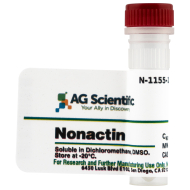Ammonia (NH3) is a poisonous and pungent-smelling colorless gas that makes the eyes water. Ammonia is readily soluble in water. The aqueous solution has an alkaline reaction and is known as ammonia water or tincture of ammonia. In conjunction with acid, ammonia forms salts that disassociate in water, to form ammonium ions (NH4 +) and the corresponding anions. In nature, ammonia is produced by the decomposition of animal or vegetable material that contains nitrogen.
The determination of dissolved ammonia is important in many clinical, industrial and environmental laboratories. Some typical applications of ammonia sensors that may be mentioned are:
- Monitoring for leaks in cooling plant, e. g. large cold stores for storing food, ice rinks, refrigeration installations in supermarkets.
- in freshwater, salt water and seawater
- in boiler feed water
- in fish farms
- in electroplating baths
- in the wastewater of gas scrubbers
- in wastewater monitoring
- in the food sector, e. g. for wine and beer
- in laboratories
The determination of total ammoniacal nitrogen in waters can be performed by using an ammonium ion-selective sensor based on nonactin. The nonactin-based ammonium ion sensor shows high selectivity for the ammonium ion in the presence of many cations.
Nonactin is a cyclic ionophore commonly produced by several species of Streptomyces which selectively binds K+ and NH4+. Nonactin has been reported to inhibit the processing of cytoplasmic precursor proteins destined for the mitochondria. Nonactin has been used as an ammonium ionophore for ammonium ion determination in potentiometric electrodes for biosensor construction as well as in fluorescent immuno assay to detect K+ ions in pharmaceutical samples.
Potentiometric biosensors detect potential on the interface between the metal and solution. These biosensors are based on measurements of ion concentration, but also, neutral particles. Potentiometric biosensors record the change of potential on pH, which is proportional to the concentration of ions (e.g. protons) released during the enzymatic reaction. The biosensor consists of polymeric membrane ammonium-selective electrode as a transducer. The ammonium-sensitive membrane contains nonactin.
The accurate measurement of NH4 + ion in an aquatic environment is of significant interest in environmental biological studies and the environmental evaluation of water since it is known to be toxic for aquatic organisms.
